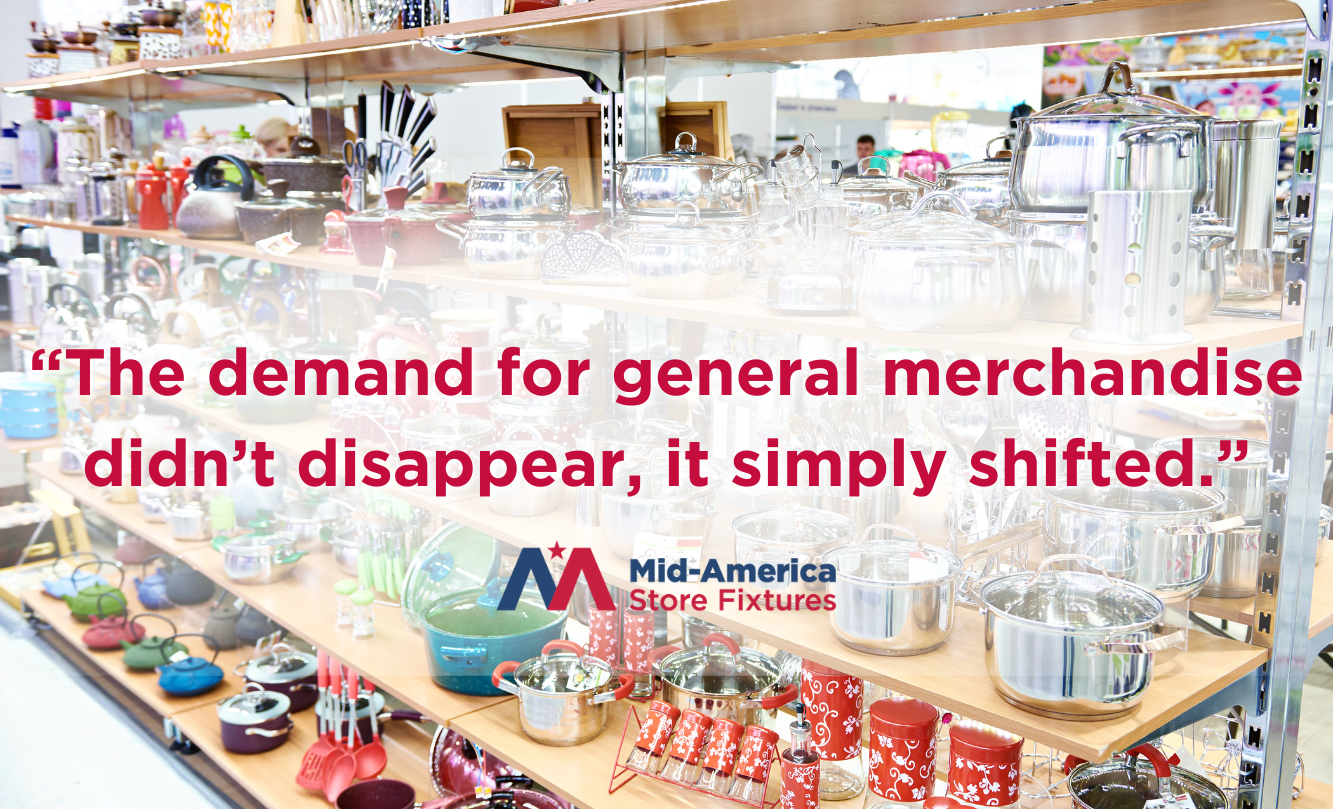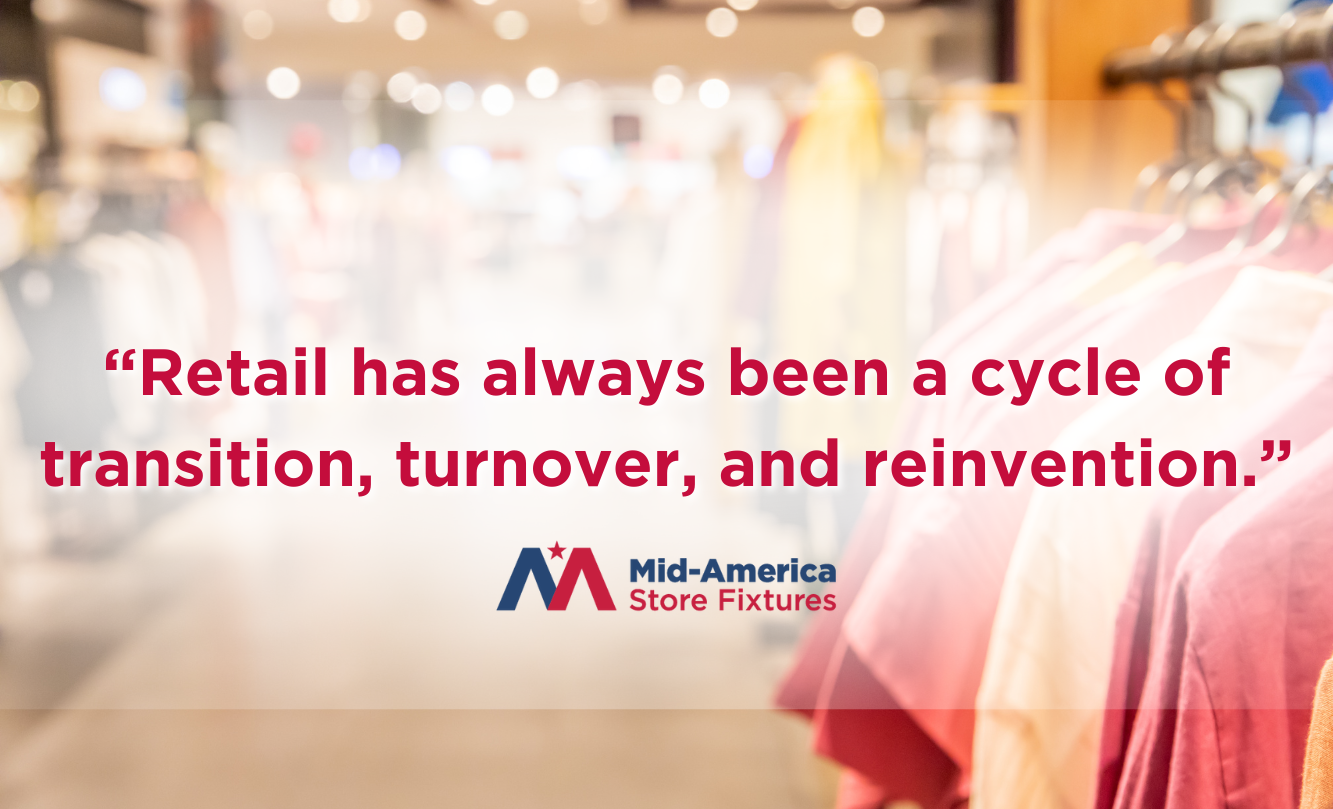

In numerous recent posts, we’ve covered a wide range of major closures happening nationwide, from retail chains and mall tenants to large distribution operations. With so many closures happening at once, it can be easy to view this moment only in terms of loss and disruption. So, we figured now would be a good time to take a step back and look at the bigger picture, identifying where optimism and opportunity still exist within this shift.

In times like these, one important reminder often gets overlooked: chaos creates opportunity. When a store closes, it sets off a chain of activity across the entire retail ecosystem. Fixtures get reallocated, space gets repositioned, and new businesses step in to fill the void. In other words, when one door closes, another one opens. In the sections below, we’ll examine how this cycle plays out across several areas of retail, and how these transitions continue to create new opportunities behind the scenes.
The phrase “chaos creates opportunity” is most commonly associated with real estate, because it’s a concept that industry professionals see play out constantly. When a tenant moves out, it may look like disruption on the surface, but behind the scenes a new cycle immediately begins. Brokers start searching for replacement tenants, contractors prep renovation plans, and service providers get pulled in to reset the space for its next use. The building doesn’t disappear, it simply changes purpose, and in that transition, an entire chain of new activity is set into motion.
This cycle is a perfect metaphor for retail, because while the brands are different, the same principles apply. When a store leaves a space, the opportunity doesn’t end with the closing sign. A closure creates room for someone new to step in, reimagine the space, and generate new economic value. In many cases, the store that comes next looks nothing like the one that came before it, yet the cycle repeats across the country over and over again.

Every closure activates a new set of players, and each one experiences the cycle in a different way. To fully understand the impact of this cycle, we need to look at how it affects the different stakeholders within retail.
One group that often experiences the effects of closures early and directly are the landlords who own these spaces. In many cases, these landlords have already gone months without receiving rent, and a space they might’ve expected to have secured for ten years suddenly sits empty. When closures happen at a rapid pace across the country, much like what’s happening now, this problem only becomes more challenging. A rising oversupply of vacant retail real estate pushes prices down, which forces landlords to offer lower rates, additional concessions, or more flexible terms just to keep their buildings occupied.
However, this is also where the idea that chaos creates opportunity becomes clear. During the pandemic in 2020, many believed retail was on the verge of collapsing for good. Instead, the market reshuffled. When Quality Farm & Fleet closed, Tractor Supply Co and Family Farm & Home stepped into the category. When Big Lots declined, Ollie’s and Ocean State Job Lot expanded. The demand for general merchandise didn’t disappear, it simply shifted toward different operators.

For landlords, every closure may feel like a setback. But historically, another tenant always arrives to fill the space, and the opportunity returns in a new form.
Another group heavily affected by store closures are the property managers and facilities managers responsible for handling the physical aftermath inside the building. When a store shuts down, these teams are the ones who inherit the practical reality of the transition. They have to arrange cleanouts, coordinate fixture removal, determine what can be reused or resold, and prepare the space so it can be turned over and made ready for the next tenant. This stage of the cycle is where the operational side of chaos becomes most visible, and it’s often where new business activity begins immediately.
This is also the space where companies like Mid-America can help. The removal, resale, and relocation of fixtures creates opportunity for a long list of vendors, freight partners, scrap companies, and installers. A single closure can activate multiple layers of work long before a new tenant ever signs a lease.
A good example that highlights how significant this stage can be is JoAnn Fabrics, which is currently closing stores across the country. Many JoAnn locations have operated in the same building for decades, so when a long-standing tenant like that leaves, the amount of physical change that suddenly needs to occur inside the space is enormous. It’s a full reset, and that reset triggers opportunity for a wide range of people and services.
We already covered mall closures in a previous post, but they’re also interesting to examine within the context of “chaos creates opportunity.” When an anchor tenant closes, it doesn’t just leave behind an empty storefront, it disrupts the traffic patterns that support the surrounding corridor stores, slows leasing activity, and increases the number of vacancies that need to be filled. In malls, the ripple effect can be broader, faster, and harder to contain than in stand-alone locations.
This creates a unique split in opportunity. New brands and new concepts often gain more room to enter the market, and they can negotiate more favorable terms because available space is abundant. At the same time, mall landlords may experience more downward pressure on rent, since the value and draw of the property declines when the main traffic drivers are gone. They already paid commission to secure this space a decade ago, and now they’ll likely have to pay again to refill that anchor position.
Still, malls demonstrate that closure doesn’t always mean decline. Even in these high-impact environments, new possibilities continue to emerge, and the cycle evolves rather than ends.
So to recap, we’ve seen this cycle show up with landlords, with property managers and facilities teams, and inside malls. Closures impact each group differently, but the core pattern stays the same: chaos creates opportunity, and eventually that opportunity is handed off to someone else. It’s important to keep perspective in moments like these. What we all do is important, but it’s not life or death. Retail has always been a cycle of transition, turnover, and reinvention.

As a company that operates inside this process every single day, our teams see firsthand how new value can be created out of disruption. We don’t root for closures, but when they happen, we’re one of the groups that steps in to help turn assets into cash, clear out, reset, and support the next chapter. Because at the end of the day, someone always steps up to fill the void.